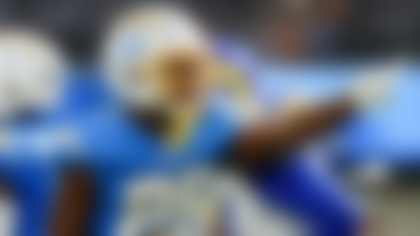The helmet-to-helmet hit by San Francisco safety Donte Whitner that sent Saints running back Pierre Thomas to the locker room early in Saturday's NFC playoff game was legal.
Whitner was not penalized because the tackle was not against a defenseless player. Helmet-to-helmet hits are banned against defenseless players in eight categories, and a runner is not one of those categories. Thomas was considered a runner because he'd made a catch, turned and made a "football move" before being hit.
The eight categories were incorporated into one new rule last March, and a new rule extended the protection for a receiver who has completed a catch until he has had time to protect himself or has clearly become a runner. Thomas had become a runner.
"Even though you get a little extra protection while trying to complete the catch, you are not a defenseless player once you have made that football move," Mike Pereira, former director of officials for the NFL and now a Fox TV commentator said Sunday. "The notion is the runner has the opportunity to clearly protect himself."
The eight defenseless player categories are:
(1) A player in the act of or just after throwing a pass;
(2) A receiver attempting to catch a pass; or who has completed a catch and has not had time to protect himself or has not clearly become a runner. If the receiver/runner is capable of avoiding or warding off the impending contact of an opponent, he is no longer a defenseless player;
(3) A runner already in the grasp of a tackler and whose forward progress has been stopped;
(4) A kickoff or punt returner attempting to field a kick in the air;
(5) A player on the ground at the end of a play;
(6) A kicker/punter during the kick or during the return;
(7) A quarterback at any time after a change of possession, and
(8) A player who receives a "blindside" block when the blocker is moving toward his own end zone and approaches the opponent from behind or from the side.
The competition committee that recommends rules changes could re-examine such hits in the offseason.
"The committee always closely studies and analyzes anything having to do with player safety," NFL spokesman Michael Signora said Sunday.
But making a change that involves runners with the ball would be problematic, Pereira said. He noted that it has been discussed by league executives in the past.
"When you try to protect a runner, the winner is the guy who gets the lowest," Pereira said. "With both players going down at each other, the notion to make the runner defenseless essentially can make it impossible to officiate. Who made the contact first?
"In this day and age, I would not be surprised if they look at it, but it's hard to prove the runner is defenseless or the tackler is defenseless if the runner has lowered his helmet.
"I understand why people say this: `If you say you are concerned about concussions, why not make all helmet hits illegal? But realistically, there is no way to legislate it out of the game."



